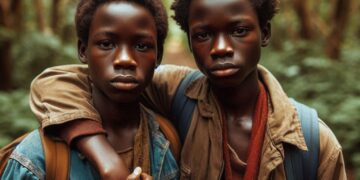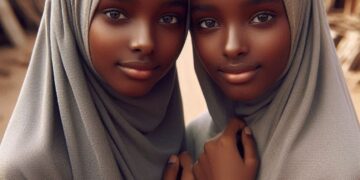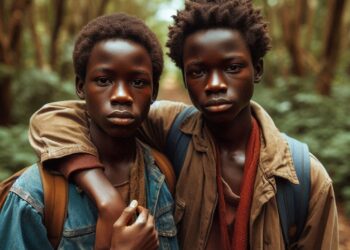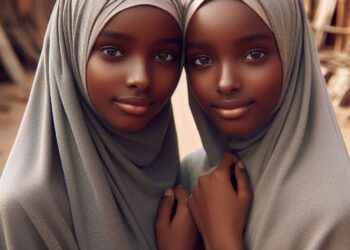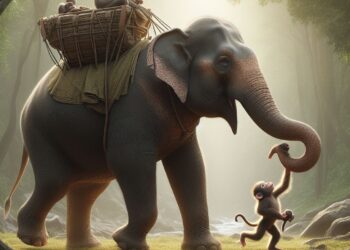In the fascinating land of Uganda, there once reigned a wise and kind-hearted king. He lived together with his beloved daughter, Namirembe, whose name translated to “Peace.” Princess Peace was renowned for being gentle and her deep affection for the creatures and features of her father’s kingdom. She also loved to adventure.
Each year, the king would set out on a journey to the Sesse Islands to visit Mukasa, the old wizard. Sometimes, he would take princess Peace along with him on these journeys. A chief known as Gabunga was responsible for preparing two majestic war canoes, “Waswa” and “Mbaliga”, along with a fleet of smaller boats and a host of skilled paddlers to transport the king and his daughter to the Sesse Islands.
Princess Peace was always amazed by the splendor of the war canoes, with their bows adorned with antelope horns, parrot feathers, shells, beads, and strips of leather. To shield princess Peace from the sun’s scorching rays, the chief had a grass-thatched shade built at the back of one of the canoes, where the princess and her nurse sheltered.
The islanders were known for their songs, and they sang heartily as they paddled. One of their favorite tunes, the “Song of Princess Peace,” echoed across the waves:
“What shall our song to the Princess be?—
Over the waters to Sesse.
Tell her the wonderful things she will see
In our beautiful islands of Sesse.
Smooth, yellow sands,
High, rocky fells,
Deep, dark forests,
Cool, green dells.
And the wizard Mukasa is weaving his spells
Away on the islands of Sesse.
Paddles to left,
Paddles to right;
Swing them all up in the air
How we shall sing on the islands tonight,
Because our Princess will be there.”
One day, princess Peace asked her father why they always visited the same islands over and over again yet there were so many other islands in the Great Lake. The king explained that not all the islands belonged to their kingdom and that venturing into other territories could be dangerous. Princess Peace, however, was curious and longed to explore other lands and meet different people with unique customs and languages.
One bright morning, as princess Peace was picking loquats in the garden, a large crane landed nearby. He told the princess that he was headed to Kavirondo – a faraway land on the Great Lake’s eastern shores – to visit his ailing brother. The crane’s description of the wild and strange country aroused princess Peace’s curiosity.
“If only I could go with you!” she exclaimed.
The crane, sensing her adventurous spirit, offered to take her on his back. However, he first asked her to be brave and ensure that she held tightly onto his feathers throughout the flight. Princess Peace agreed and eagerly climbed onto the crane’s back, and they set off on an exciting adventure.
High above the blue waters they soared, passing tiny, uninhabited islands with only nesting birds to keep them company. Once, they came across a flock of grey parrots with red tails, who were on their way to Kyagwe for the ripe loquats and wild plums. Princess Peace was amazed by the beauty of the scenery and continued to cling tightly to the crane’s feathers as they journeyed through the skies.
As they approached the shores of Kavirondo, the crane descended upon a rocky landing site. Princess Peace got off the crane and was amazed by the unfamiliar land. She watched Kavirondo warriors wearing helmets that were adorned with cowrie shells and brightly colored ostrich feathers, as well as women adorned with beads and shells but no clothing.
After a fun-filled day of touring Kavirondo, the crane informed princess Peace that it was high time they returned to Uganda, lest they lost their way in the dark. Princess Peace, satisfied with the wonder of her journey, climbed onto the crane’s back and they set off towards the setting sun. As they approached Uganda’s green shores and islands, princess Peace was filled with joy.
They eventually reached the king’s palace, where princess Peace excitedly told her father about the adventure to Kavirondo. Grateful for the crane’s care, the king rewarded the crane with a golden crest, marked with a little black emblem at its base, as a token of his appreciation.
The crane was delighted and walked about with a spring in his step, bursting with pride. From then on, cranes have always had golden crests on their heads, coming to be known as “Golden-Crested Cranes.”
Princess Peace learned that while other lands might be interesting, there was no place like her beautiful Uganda. And so, if you ever find yourself in Kavirondo, you just might discover that very same path that princess Peace and the crane took – now a broad road from Kisumu to Mumias – and maybe, if you search carefully, you’ll find the very rock that princess Peace sat on during on her unforgettable journey.

